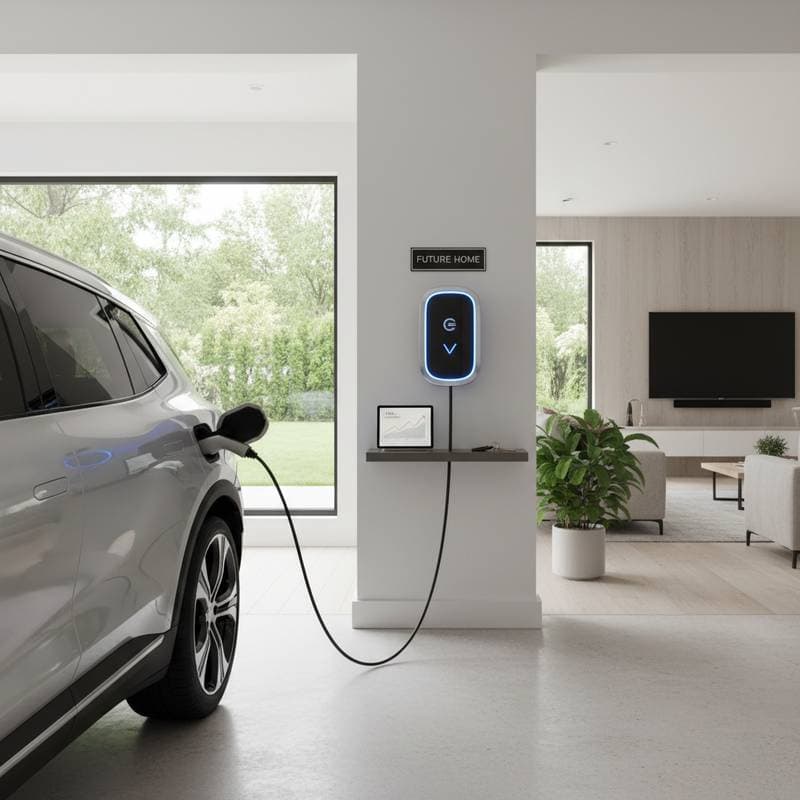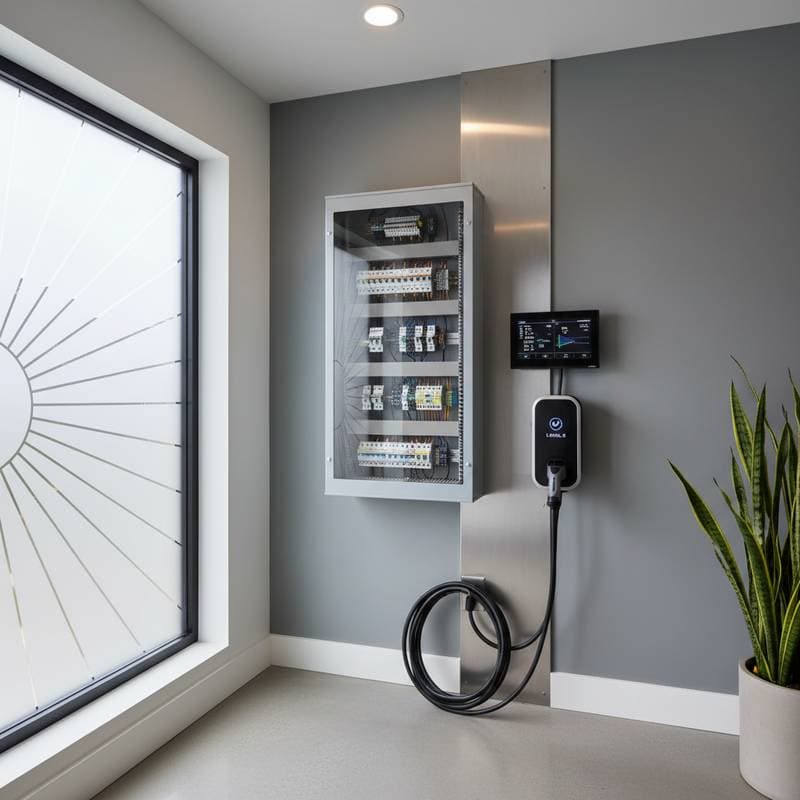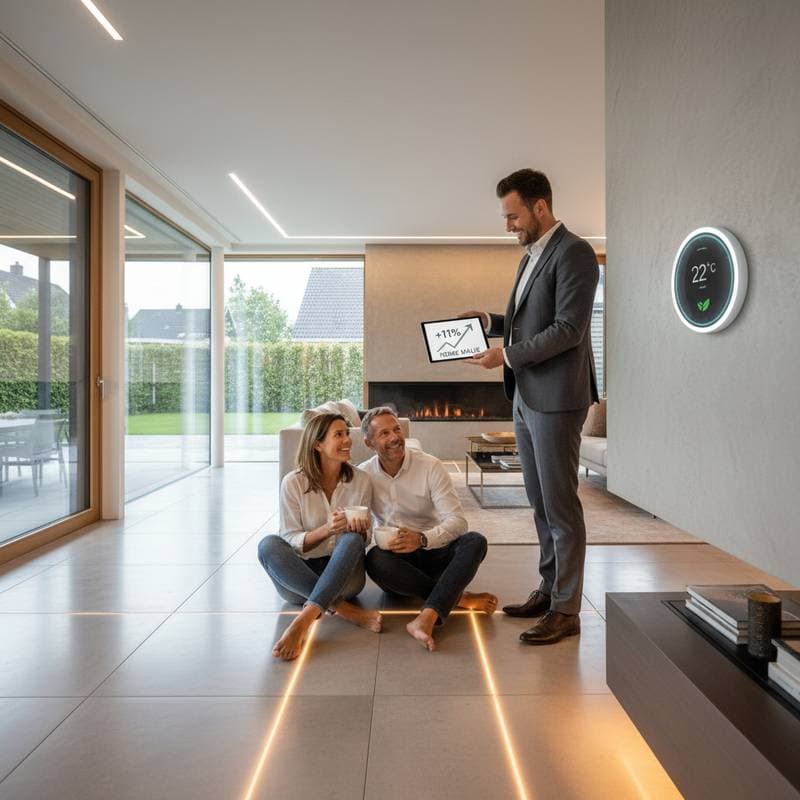EV Charging Stations Elevate Home Value by 15 Percent in 2025
Homeowners who install an electric vehicle charging station often see their property value rise by up to 15 percent. For a typical $500,000 home, this translates to an added $75,000 in market appeal. Prospective buyers increasingly view such installations as essential elements of a contemporary, energy-efficient residence, highlighting ease of use, environmental responsibility, and preparedness for emerging trends.
This upgrade aligns with growing demand for sustainable living options. Real estate experts note that homes equipped with EV infrastructure attract offers more quickly and at higher prices. Before proceeding, consider key factors such as preparation steps, financial implications, timelines, and professional involvement to ensure a seamless process.
Essential Steps for Installing a Home EV Charger
Follow these structured steps to integrate an EV charger effectively into your home setup.
-
Evaluate your electrical panel capacity. Determine whether sufficient power exists for a 240-volt circuit. Level 2 chargers typically require a 40- to 50-amp breaker, so an inspection reveals if upgrades become necessary.
-
Select the appropriate charger level. Level 1 options connect to standard 120-volt outlets and provide gradual charging rates. Level 2 systems demand a dedicated circuit yet deliver 25 to 30 miles of driving range per hour, suiting daily needs.
-
Determine the optimal installation location. Position the charger close to the primary parking area, preferably within 20 feet of the electrical panel, to minimize wiring expenses and complexity.
-
Secure necessary permits. Local municipalities often mandate electrical permits for 240-volt installations. Utility companies may provide rebates contingent upon verified inspections.
-
Engage a licensed electrician. Professionals handle permitting, circuit installation, and safety testing to comply with regulations and prevent hazards.
-
Register the charger for incentives. Certain rebate initiatives require enrollment to monitor energy consumption and qualify for benefits.
-
Maintain documentation of the process. Retain invoices, photographs, and certificates, which prove the installation's quality to future appraisers or purchasers.
Timeline for EV Charger Installation
The journey from initial planning to operational charging spans 2 to 5 days for most households. The actual mounting and wiring phase consumes less than 4 hours after gathering materials.
| Step | Time Estimate | Notes |
|---|---|---|
| Electrical inspection and permit | 1 day | Certain areas process approvals rapidly on the same day |
| Installation | 3 to 4 hours | Encompasses wiring, mounting, and connections |
| Testing and cleanup | 30 minutes | Verifies grounding and functionality |
Panel upgrades extend the schedule by an additional day or two. Coordinating with an electrician frequently represents the most time-intensive element.
Costs Associated with EV Charger Installation
Budgeting accurately ensures this investment remains worthwhile. Entry-level Level 2 chargers range from $500 to $1,000, while professional installation adds $750 to $2,000 depending on wiring distance and panel modifications. Total outlays typically fall between $1,500 and $3,500.
Rebate programs from utilities or governments can offset 20 to 50 percent of expenses, often up to $1,000 per installation. Factor in potential subpanel costs of $1,000 to $2,000 if existing capacity proves inadequate. These figures position the upgrade as accessible, with returns realized through enhanced property appeal.
Required Tools and Materials
Assemble these items for a smooth installation:
- Level 2 charger unit
- Mounting hardware and brackets
- 240-volt outlet or hardwired setup
- Conduit and appropriately gauged wire based on amperage needs
- Drill and stud finder for secure placement
- Voltage tester for safety checks
- Electrical permit documentation
Professionals supply these elements and guarantee adherence to building codes. For independent efforts, consult local guidelines thoroughly to avoid compliance issues.
Comparing Level 1 and Level 2 Chargers
Understand the differences to choose wisely for your lifestyle.
| Charger Type | Power Source | Range per Hour | Typical Use Case |
|---|---|---|---|
| Level 1 | 120 volts | 3 to 5 miles | Suitable for occasional or light driving needs |
| Level 2 | 240 volts | 25 to 30 miles | Ideal for regular commuters and household use |
Level 2 models strike an optimal balance among expense, charging speed, and practicality. Level 1 suffices for minimal usage or scenarios where structural changes prove unfeasible, such as rentals.
Situations Requiring Professional Assistance
Seek expert help in these circumstances:
- When installing a new breaker or subpanel becomes essential.
- If the distance from the panel to the installation site surpasses 40 feet.
- For setups involving multiple chargers to support family or guests.
- Upon discovering issues like wiring corrosion, aluminum conductors, or obsolete panels.
- To incorporate integrations with solar panels or automated home systems.
Electricians assist in calculating circuit sizes for anticipated expansions, such as additional vehicles. Proactive design prevents costly revisions down the line.
Valuable Smart Features for EV Chargers
Advanced functionalities enhance usability and appeal.
- Wi-Fi connectivity: Enables remote initiation or halting of charging sessions via mobile applications.
- Load balancing: Distributes power to avoid circuit overloads during simultaneous high-demand activities.
- Energy usage monitoring: Tracks consumption patterns to optimize efficiency.
- Solar synchronization: Aligns charging with excess solar generation for cost savings.
These intelligent options increase initial costs by 20 to 30 percent yet yield ongoing efficiencies. They also elevate the home's technological profile, attracting discerning buyers.
Strategies for Highlighting Your EV Charger During Sales
Position the charger prominently in listings as a premium feature. Detail the model, capacity, and integrated technologies, supported by installation images and permit records.
Emphasize its fixed, secure nature to assure buyers of immediate usability. Portable units should specify retention with the property. Properties showcasing professional EV setups imply broader modernizations, including robust electrical systems and efficient appliances, fostering buyer confidence.
Practical Recommendations for Long-Term Maintenance
- Secure cords in coiled positions away from walkways to promote safety and tidiness.
- Mark the corresponding breaker clearly within the panel as the EV charger circuit.
- Conduct monthly charging tests to maintain clean and reliable connections.
- Consult your electrician regarding panel capacity prior to solar additions.
- Archive all installation records for use during property valuations.
These habits sustain the system's performance and underscore its value.
Frequently Asked Questions
Does an EV charger truly add 15 percent to home value? Studies from real estate associations indicate yes, particularly in urban markets where EV adoption grows. The boost stems from convenience and alignment with green preferences.
What if I rent my home or apartment? Portable Level 1 chargers offer a non-permanent solution. Check lease terms before any modifications.
Are rebates available everywhere? Availability varies by location; federal incentives like those under the Inflation Reduction Act provide up to $7,500 for qualified installations, supplemented by state programs.
How do I know if my panel can handle it? A licensed electrician performs a load calculation to assess capacity without risk.
Can I install it myself? Possible for simple setups, but professionals ensure safety and code compliance, avoiding insurance complications.
Positioning Your Home for Future Mobility Trends
Investing in an EV charger prepares your property for an electrified future. This enhancement not only elevates resale potential but also supports sustainable habits. With careful planning, homeowners realize both environmental and financial gains.











